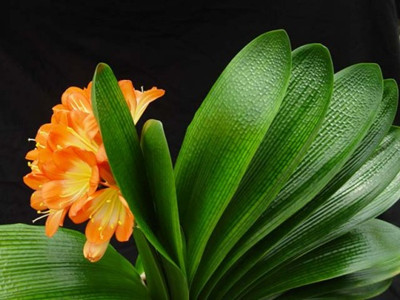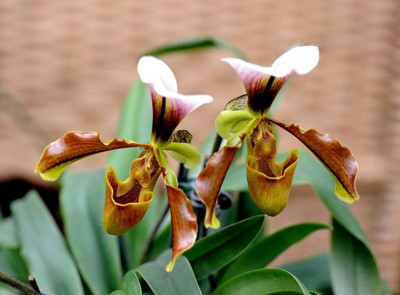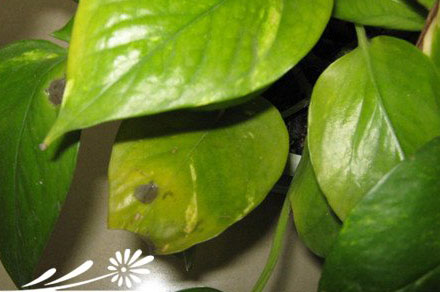Criteria for evaluation of Clivia
Over the years, people in the purchase of high-grade orchids, mostly based on the advantages and disadvantages of leaves to decide, basically do not consider flowers and other conditions. Therefore, the evaluation standard of gentleman orchid appreciation is of course based on leaves. To sum up, there are mainly + items, that is, brightness, fineness, stiffness, thickness, vein, color, aspect ratio, head shape, seat shape, plant shape, auxiliary conditions, flowers (scape, fruit) and others.
1. Brightness
Brightness refers to the degree of reflection on the surface of the leaf, and special attention should be paid to the distinction between polished or original state of the leaf when appreciating. The advantages and disadvantages of brightness are oil bright, bright, slightly bright, not bright.
2. Fineness
Fineness refers to the smoothness of the blade surface. The degree of fineness can be sensed by both look and feel. It is most obvious to observe with a magnifying glass. The advantages and disadvantages of fineness are as follows: exquisite, more delicate,-like delicate, relatively rough, rough.
3. Stiffness
Stiffness refers to the overall bending strength of the blade, or the degree to which it would rather bend than bend, which is related to but not equal to hardness. It can also be regarded as the hardness of the whole blade, rather than the hardness of a certain point on the blade. It is related to the length and thickness of the leaves. Therefore, when comparing the stiffness of two Cymbidium plants with long leaves and short leaves, the stiffness should be measured at 10 cm from the top. The stronger the stiffness, the better, and the weaker, the worse.
4. Thickness
The thickness is the thickness of the mesophyll in the cross section of the leaf, and the smaller the difference between the thickness of the edge and the middle of the leaf, the better. The thickness of the blade head determines the thickness of the blade, so the average thickness of the edge and the middle five centimeters away from the top of the blade should be taken. The advantages and disadvantages of thickness are 1.6 mm, 1.4 mm, 1.2 mm, 1 mm and less than 1 mm.
5. Vein pattern
The veins are strong and protruding, evenly spaced over the whole leaf surface, and it is better to have dense grain patterns on the head. The vertical vein pattern has a large distance between the top, the horizontal vein pattern is positive, and the Narita character lattice is better. The smaller the gap between leaves, the better, so multiple leaves should be comprehensively evaluated.

6. Color
The light color is better, and the greater the contrast (contrast), the better if there are two colors on the leaf surface. For the Golden Road, the ratio of the dark and light color of the leaf should be at 1:1, and the light color should be transparent. Since Golden Silk Road is a member of the gentleman's orchid family, its appreciation evaluation should be carried out with reference to various standards. Over the years, when people buy medium-and high-grade orchids, they often decide whether to choose by the quality of the leaves, and basically do not consider the flowers and other conditions. Therefore, the evaluation standard of gentleman orchid appreciation is of course based on leaves. To sum up, there are mainly ten items, that is, brightness, fineness, stiffness, thickness, vein, color, aspect ratio, head shape, seat shape, plant shape, auxiliary conditions, flowers (scape, fruit) and others.
1. Brightness
Brightness refers to the degree of reflection on the surface of the leaf, and special attention should be paid to the distinction between polished or original state of the leaf when appreciating. The advantages and disadvantages of brightness are oil bright, bright, slightly bright, not bright.
2. Fineness
Fineness refers to the smoothness of the blade surface. The degree of fineness can be sensed by both look and feel. It is most obvious to observe with a magnifying glass. The advantages and disadvantages of fineness are as follows: delicate, more delicate, generally delicate, relatively rough, rough.
3. Stiffness
Stiffness refers to the overall bending strength of the blade, or the degree to which it would rather bend than bend, which is related to but not equal to hardness. It can also be regarded as the hardness of the whole blade, rather than the hardness of a certain point on the blade. It is related to the length and thickness of the leaves. Therefore, when comparing the stiffness of two Cymbidium plants with long leaves and short leaves, the stiffness should be measured at 10 cm from the top. The stronger the stiffness, the better, and the weaker, the worse.
4. Thickness
The thickness is the thickness of the mesophyll in the cross section of the leaf, and the smaller the difference between the thickness of the edge and the middle of the leaf, the better. The thickness of the blade head determines the thickness of the blade, so the average thickness of the edge and the middle of the blade should be taken five centimeters away from the top of the blade. The advantages and disadvantages of thickness are 1.6 mm, 1.4 mm, 1.2 mm, 1 mm and less than 1 mm.
5. Vein pattern
The veins are strong and protruding, evenly spaced over the whole leaf surface, and it is better to have dense grain patterns on the head. The vertical vein pattern has a large distance between the top, the horizontal vein pattern is positive, and the Narita character lattice is better. The smaller the gap between leaves, the better, so multiple leaves should be comprehensively evaluated.
6. Color
The light color is better, and the greater the contrast (contrast), the better if there are two colors on the leaf surface. For the Golden Road, the ratio of the dark and light color of the leaf should be at 1:1, and the light color should be transparent. Since Golden Silk Road is a member of the gentleman's orchid family, its appreciation evaluation should be carried out with reference to various standards.
7. Aspect ratio
The ratio of length to width is the proportion of the length and width of the leaf, and only when the proportion is in harmony is beauty. One-sided pursuit of width and short, proportion imbalance is not scientific, from the perspective of modeling design is not beautiful. The harmonious ratio of aspect ratio is 3:1. The length of the leaf refers to the distance from the top of the leaf to the edge of the leaf sheath and the leaf base node, and the width refers to the value of the widest part of the measured leaf. When appreciating, the average length-width ratio of the six best leaves should be taken.
8. Head shape
The head shape refers to the shape of the top of the blade. The smooth transition of the top curve of the blade is better, the equal radius is the best, and the blunt tip is better than the acute tip. When appreciating the head shape, the shape of more than half of the leaves should be comprehensively considered. The advantages and disadvantages of head shape are: semicircle, oval (flat head), sharp, acuminate, acute.
9. Seat shape
The seat shape refers to the shape of the pseudo-bulb woven by the leaf sheath on the rhizome. There are mainly Yuanbao (trapezoid), tower (triangle), column (square Tong), wedge (inverted trapezoid). The four shapes are divided into two because of their different heights. The quality of the seat shape depends on the longitudinal spacing of the leaf sheath edge and the angle between the edges of the leaf sheath. The smaller the spacing, the larger the angle, the better the seat shape. The advantages and disadvantages of seat shape are as follows: low wedge and high wedge.
10. Plant shape
For the overall shape of the magnolia, it is made up of the shape, arrangement and fabrication of the leaves. A good plant shape is to look at a line on the side, just like opening a fan. Looking at a line from the side, it means that the leaves are not skewed around, which is more related to nursery care and has little to do with the variety. The positive view, such as opening the fan, refers to; the difference between the length of each leaf is small, and the blade extends obliquely upward; the angle between the bottom leaf and the horizontal line should be greater than zero. The distance between the two slices is basically equal. The quality of the plant shape depends on whether the leaf is flat and extended and the length and tilt angle of the leaf base (commonly known as the neck, that is, the narrow and thick transition section between the leaf sheath and the blade). The worst plant shape is the drooping arch of the leaf, and the leaf base is too short and the tilt angle is too large, so that the leaf can not form a fan at all.
The above are the ten main standards for appreciating the high and low grades of magnolia.
Two auxiliary standards:
1. The flowers are big and colorful, the petals are compact, the scape is stout and the height is appropriate, and the fruit is light and glossy.
2. no man-made and other factors damage, no diseases and insect pests and so on.
Grade division and score of gentleman orchid
Among the ten main conditions for appreciating magnolia, the first four are the foundation and the necessary conditions for high-grade orchids, and the other six are the icing on the cake, and the more you have, the better. therefore, the scores of these ten standards cannot be evenly distributed. On the other hand, the auxiliary standards are mostly used in the evaluation of awards in various exhibitions, and almost no one is considered in appreciating the grade of magnolia. Therefore, its share of the score is very small, the specific distribution is as follows, the main criteria:
1) Luminance: 1Mui Mui Mui 10 points
2) the degree of fineness: 1 the score of Murray Murray is 10
3) stiffness: 1. 10 points for Muhami.
4) thickness: 1Mui Mui Mui 8 points
5) Pulse pattern: 1 10 points for Muhami Murray
6) Color: 1Mui Mui Mui 10 points
7) ratio of length to width: 1 10 points for Muhami Murray
8) head shape: 1. 10 points for Muhami.
9) seat shape: 1 Musi Murray 8 points
10) Plant shape: 1 Murray, Murray, 8 points
Auxiliary standard:
1. Flowers and fruits: 1 Mui Mui 3 points (under normal growth conditions, Huaguo Jian can each get 0.1 points-1 points)
2. Others: 1Mui 3 points (0.1-1 points each for no diseases and insect pests, all kinds of damage and basin soil cleanliness)
Total: 100 points
B points for each grade
Those with more than 80 points are treasures.
2, 70 points-79 points as boutique
3, 60 points-69 points as a good product
4, 50 points-59 points as good products
Less than 5 and 50 points are general varieties.
The magnificent orchid is unfathomable, and there are few who can really gain insight into its mystery. Our view may not be completely correct, only for new and old flower friends not to take detours, or less detours, for gentleman orchids to open all over the country as soon as possible, to the world and put forward this standard. People of insight are welcome to put forward more valuable suggestions or suggestions. Appreciation and grading of Cymbidium
The magnolia is a wonderful flower among the thousands of flowers, a kind of strange flowers and plants. It is strange in the beauty of leaves, flowers and fruits, and it is better to appreciate leaves than flowers. Other precious flowers or gorgeous flowers eye-catching, or people with aroma let people foot, but the color at a glance, aroma can be known. The leaves of Cymbidium have high ornamental value, which can be watched and enjoyed all the time. The lower part of the leaf sheath is made of false bulbs, some like exquisite tower, some like Jinyuanbao, while the top of the leaf is of different shapes, some like oval, some like semicircle, like those drawn with compasses. Some of the leaves are like black pearls scattered on a Jasper plate, and some are like yellow gold plates inlaid with green gems, forming colorful patterns. The stiff and straight blade stretches flat from the base to the top, without bending or bowing, symbolizing the spirit of being upright and indomitable.
Cymbidium is a perennial plant. After decades of planting, it can cut off a section of its rhizome to strengthen it, making it "rejuvenated" and rejuvenated. The first generation of "technicians" has been in bloom for nearly 48 years and is still thriving. It is precisely because the magnolia has strong vitality and immortality that it is called "the flower of ancient rarity and longevity". In recent years, the bonsai and flower arrangement art of Cymbidium have been valued by some people and have broad prospects for development. As far as the appreciation of a single plant of Cymbidium is concerned, the ratio of length to width of leaves is less than 3: 1, while for bonsai with many clumps, the larger the ratio of length to width, the better, because the narrower and longer the leaves are, the more relaxed, elegant and generous they appear. In addition, Magnolia also contains trace element selenium, which has high medicinal value.
Another wonder of the magnificent orchid is that it does not need special cultivation. Its flowers bloom in winter and have a long flowering period. Especially in the north, the snow and ice outside are covered in white, the indoor green leaves and safflower are full of spring, and they are full of vitality, giving people a sense of joy and joy, setting off a festive and warm atmosphere, which is welcomed by thousands of families.
Over the years, when people buy orchids, they often decide whether or not to choose by the merits of leaves, so the evaluation standard of orchid appreciation is mainly based on leaves. To sum up, there are mainly 10 items, that is, brightness, fineness, stiffness, thickness, vein, color, ratio of length to width, head shape, seat shape, plant shape; two auxiliary conditions, flowers (flowers, fruit) and others.
1. Among the 10 main conditions for appreciating magnolia, 4 are the foundation and the necessary conditions for high-grade magnolia, and the other 6 are the icing on the cake. The more you have, the better.
Main standards: 1. Brightness: 1 to 11; 2. Fineness: 1 to 11; 3. Stiffness: 1 to 11; 4. Thickness: 1 to 11 points; 5. Pulse: 1 to 11 points; 6. Color: 1 to 11; 7. Aspect ratio: 1 to 8 points; 8. Head shape: 1 to 8 points; 9. Seat shape: 1 to 8 points; 10. Plant shape: 1 to 10 points. Total: 100 points.
Auxiliary standard: 1. The flowers are large and colorful, the petals are compact, the flowers are stout, the height is moderate, and the fruit is bright and glossy: 1 to 6 points (2 points each for flowers, flowers and fruits); 2. No diseases and insect pests, no man-made and other factors injury: 4 points. Total: 10 points.
Second, each grade occupies the score of the main 10 standards to determine the level of a gentleman orchid, if the score is the same, to compare the auxiliary standard score: more than 90 points are the best; 80 to 89 points are treasures; 70 points to 79 points are good products; 60 points to 69 points are good products; 50 points to 59 points are good products; 40 points to 49 points are ordinary products; less than 40 points are inferior products.
Niu Junqi, vice president of Changchun gentleman orchid association
- Prev

Autumn maintenance of Paphiopedilum
Paphiopedilum is a member of the Magnolia family, but there are also many varieties born and raised in China. The most convenient thing for families to cultivate Paphiopedilum is that it does not need a special requirement for temperature and can grow normally at room temperature above 5 degrees Celsius. After the hot summer heat, Paphiopedilum woke up from dormancy and entered the normal growth period.
- Next

Causes and solutions of yellowing of green pineapple leaves
In the process of indoor green pineapple breeding, many flower friends have found that the green pineapple leaves are yellowing, so why do the green pineapple leaves turn yellow, and what should I do if the green pineapple leaves turn yellow? on the whole, the green pineapple leaves turn yellow. if it is aquaculture, there are bacteria in the water.
Related
- Fuxing push coffee new agricultural production and marketing class: lack of small-scale processing plants
- Jujube rice field leisure farm deep ploughing Yilan for five years to create a space for organic food and play
- Nongyu Farm-A trial of organic papaya for brave women with advanced technology
- Four points for attention in the prevention and control of diseases and insect pests of edible fungi
- How to add nutrient solution to Edible Fungi
- Is there any good way to control edible fungus mites?
- Open Inoculation Technology of Edible Fungi
- Is there any clever way to use fertilizer for edible fungus in winter?
- What agents are used to kill the pathogens of edible fungi in the mushroom shed?
- Rapid drying of Edible Fungi

